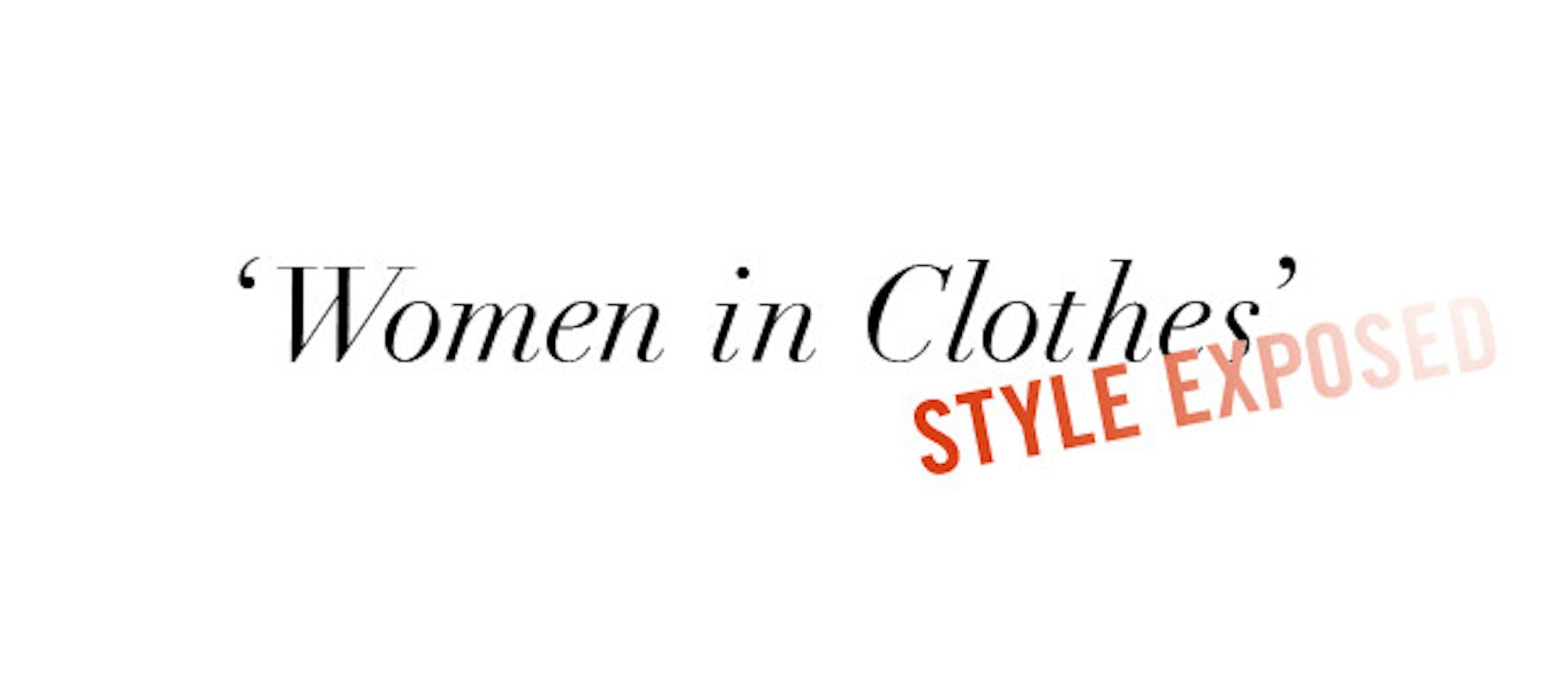
“Women in Clothes” is a somewhat deceiving title for the book on fashion edited by Sheila Heti, Heidi Julavits and Leanne Shapton. Pictures of perfect women in perfect clothes, contrary to so many fashion books before, are not the focus. Not a single woman is featured in her own clothes – no, this does not imply lots of unclothed women, but rather, inventive ways of displaying clothes in collections and illustrations instead of on their owners.
The book is attuned to the everyday lives of everyday people, the basis of the book coming from surveys answered by 642 women “famous, anonymous, religious, secular, married, single, young and old.”
The book is separated into conversations, surveys and essays. Interspersed are unique projects – Zosia Mamet in a black onezie bending, crumbling and flexing into unique poses used in past fashion media; “Mothers as Others,” a feature in which women were told to “send a photograph of your mother from the time before she had children and tell us what you see”; and pictures of collections of clothes and accessories women own in multiples: Mitzi Angel’s unworn necklaces, Lisa Prystup’s marled socks and other eclectic assortments.
The format of this book reflects Leanne Shapton’s other works. I fell in love with Shapton’s unique stylistic configuration last semester when I read her 2012 novel, “Swimming Stories,” for a Sports and American Culture class. Infused throughout her reflection on the time she spent in pools, competitively and recreationally, were the collection of swimsuits accompanied by the memories that they came to represent, illustrations of teammates and paintings of the pools she had swum in.
“Women in Clothes” focuses on how women feel in clothes and how these internal perceptions affect their lives. Rather than reflect on how women look in clothes, a projected, external observation that can inspire nit-picking, the book focuses on how clothes make women feel, an internal, reflective approach. Although how clothes make us look and how clothes make us feel are related, they are not interdependent. How clothes make us look is something that can be interpreted and corrupted by everyone around us, whereas how clothes make us feel is impervious to the outside world.
The surveys evoked many personal stories related to women's respective thoughts on how they present themselves and the influences that lay underneath the layers. Questions included: “Was there a time in your life when your style changed dramatically?” and “When do you feel most attractive?” The achieved effect is a casual conversation on fashion incorporating diverse specific stories and events.
The book does feature a few big names in fashion: Lena Dunham, Tavi Gevinson and Molly Ringwald (whose “Pretty in Pink” style I stare at now on the poster hanging above my desk." These women are all known to approach fashion with a fun, experimental “wear what you like” perspective.
Dunham answered survey questions in her usually cheeky manner, describing her style as, “undone hair, cardigans, collars, showing my knees, a clunky flat, a witty print, a little strip of belly showing ‘by accident.'”
Gevinson's project, "Color Taxonomy," describes colors and how they are represented in the fashion world and everyday life. For example, on blue: “It is a hard to read as a word without hearing Beyonce crooning the name of her baby in that video where they are on the beach. Baby blue is great for a poodle skirt or a Margot Tenenbaumesque Lacoste jumper.” She goes on to mention how Mindy Kaling called navy a stylist’s crutch to slim clients without going for black. In this paragraph she managed to mention Beyonce, a Wes Anderson movie and Mindy Kaling – reaffirming her as the coolest eighteen year-old ever and my feigned best friend.
Ringwald spoke with artist Cindy Sherman on aging, artistic inspiration and representations of women in the media.
The book's eclectic sources, whimsical artistic elements and content accessibility make "Women In Clothes" a trendsetting experiment in fashion literature.













